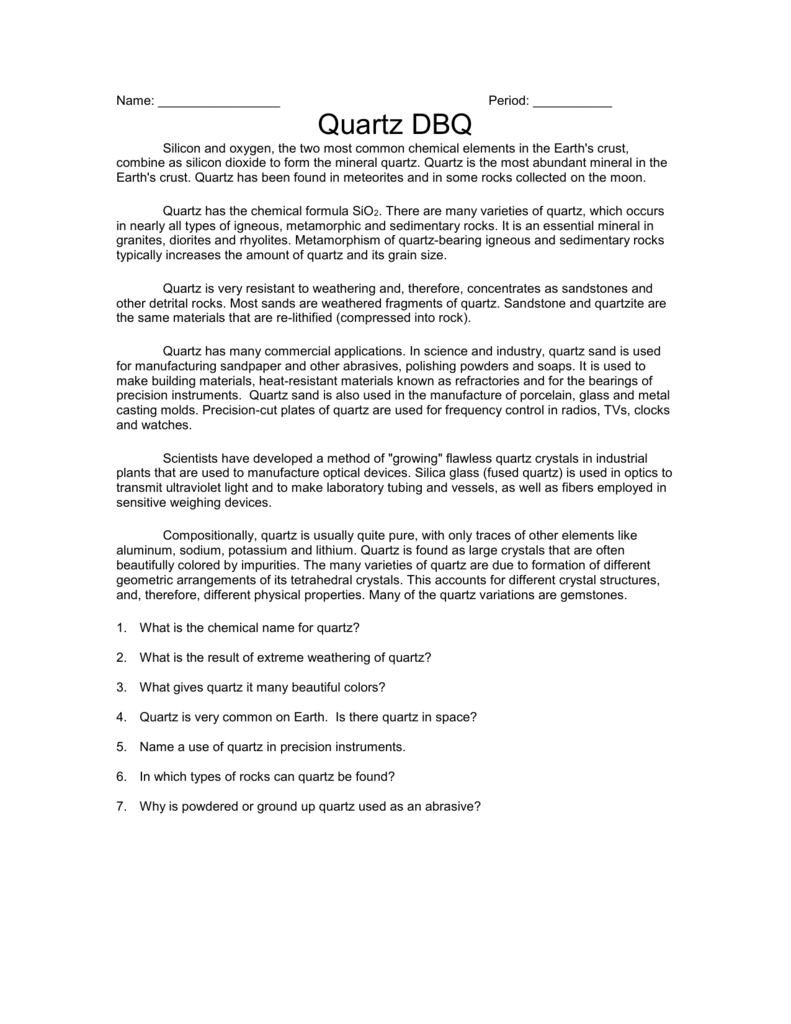What Is the Result of Extreme Weathering of Quartz
The fresh color is light greyish to off-white. Although we may not see the changes the physical and chemical properties of rocks are constantly changing in a natural never-ending cycle called the rock cycle.

Pin On Ideas For Architects Interior Designers
One of the most common locations for breccia formation is at the base of an outcrop where mechanical weathering debris accumulates.

. It is common in the continental crust of Earth where it is found in igneous intrusionsThese range in size from dikes only a few centimeters. Those formed as a result of widely distributed pressure and temperature changes induced by tectonic movements are known as regional metamorphic rocks. The high temperatures heavy rainfall and humidity of tropical regions have driven chemical weathering to the extreme.
The rock beds are jointed and fractured showing brittle deformation due o stresses. As a result. Most changes happen very slowly.
Quartz responds far slowly to the chemical attack than olivine or pyroxene. Carbon transfers that result. Silicates felspar mica and amphibole but not quartz 3.
In India illegal sand mining is the countrys largest. Breccia forms where broken angular fragments of rock or mineral debris accumulate. Granite ˈ ɡ r æ n ə t is a coarse-grained intrusive igneous rock composed mostly of quartz alkali feldspar and plagioclaseIt forms from magma with a high content of silica and alkali metal oxides that slowly cools and solidifies underground.
The major minerals are quartz and feldspar while muscovite and biotite are minor minerals. The velocity of wind is a result of air pressure differences due to heating and cooling. The minerals in the weathering series are essentially in the same order as Bowens reaction series the order in which minerals crystallize from molten magma.
Under these conditions there is a tendency for all ordered systems to seek lower levels of energy or order. Sand theft or unauthorised or illegal sand mining leads to a widely unknown global example of natural and non-renewable resource depletion problem comparable in extent to global water scarcity. Weathering - the disintegration and decomposition of rock at or near the surface of the earth.
This distinguishes weathering from erosion. It affects the rocks in place and no transport is involved. 1 although the eponymous minerals used to define this sequence such as hornblende do not always form in metapelites due to their Al-rich and Ca-poor bulk composition Table 1Nonetheless these sub-facies have use in describing the relative intensity of metamorphism.
Contact metamorphism is often described using subdivisions of the low-pressure hornfels facies Fig. Non-foliated textures do not have lineations foliations or other alignments of mineral grains. Chemical weathering may involve the disintegration of a rock into rock fragments due to conversion of silicates into clays.
Non-foliated metamorphic rocks are typically composed of just one mineral and therefore usually show the effects of metamorphism with recrystallization in which crystals grow together but with no preferred directionThe two most common examples of non-foliated rocks are quartzite and. Calcite is often the cement that binds. A weathering class eg slight moderate strong can be assigned to record the bedrocks subjective extent of weathering as compared to its presumed unweathered state.
The arrangement of minerals according to the susceptibility to chemical weathering is called weathering series. Rocks change as a result of natural processes that are taking place all the time. Beach theft is illegal removal of large quantities of sand from a beach leading to full or partial disappearance of the beach.
Weathering generally increases porosity and the water-holding capacity and reduces bulk density and coherency. Another is in stream deposits a short distance from the outcrop or on an alluvial fan. Many take place below the Earths surface so we may not even notice the changes.
Chert was often used by Native Americans to construct arrowheads and spear points. This is all done through weathering. Microcrystalline quartz is found in many colors and forms but can be distinguished by its extreme hardness the only common sedimentary mineral that is harder than glass.
Calcite and dolomite are both carbonate minerals. Some breccias form from debris flow deposits. 33 Besham granite gniesses quartz feldspar biotite muscovite 34.
Metamorphic rocks formed from direct magma heating and intrusions are termed as thermal or contact metamorphic rocks. Besham granite gniesses 33. Mountain building results in high erosion rates and the interaction of rocks with the atmosphere water and life.
Desert winds are the result of temperatures that commonly fluctuate from 7 degrees centigrade at night to 43 degrees centigrade or more during the day 45110 degrees Fahrenheit and can travel at speeds up to 70 miles per hour. As a result the original rocks are transformed into metamorphic rocks.

Quartz Indiana Geological Water Survey

Apophyllite Crystal Cluster Zeolite Specimen From Jalgaon Etsy Video Video Crystals Minerals Crystals Minerals And Gemstones

A Quartz Feldspar And Rock Fragment Grains In Sublitharenite B Download Scientific Diagram

No comments for "What Is the Result of Extreme Weathering of Quartz"
Post a Comment